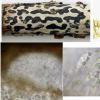
12-12-2025 18:39
Mirek GrycHello everyone.Macrofeatures similar to Mollisia b

09-12-2025 12:06
 Andgelo Mombert
Andgelo Mombert
Bonjour,Je recherche l'article concernant Hypobryo

07-12-2025 16:07
Arnold BüschlenHallo, ich habe in einer Moos-Aufsammlung (epiphy

08-12-2025 21:04
Mark Stevens"Hello everyone,I'm relatively new to microscopy (

08-12-2025 18:59
 Lothar Krieglsteiner
Lothar Krieglsteiner
.. found by a seminar-participant, I do not know t

08-12-2025 17:37
 Lothar Krieglsteiner
Lothar Krieglsteiner
20.6.25, on branch of Abies infected and thickened

16-03-2014 22:00
Hello,I found this species a few months ago but ha

08-12-2025 13:39
Thomas Læssøehttps://svampe.databasen.org/observations/10572899
Coelomycete on Acer wood
Hans-Otto Baral,
21-06-2006 13:00
 Has anybody ever seen this coelomycete? It grew in Sweden (Skane, NP Söderasen, leg. Felix), on undecayed wood of a broken, 18 mm thick Acer branch obliquely hanging on the ground. Stromata 1.5-3 mm broad, 150-250 µm thick, pycnidial cavities 60-150 µm tall. Conidia *9.5-14 x 3.3-4 µm, conidiogenesis very probably phialidic.
Has anybody ever seen this coelomycete? It grew in Sweden (Skane, NP Söderasen, leg. Felix), on undecayed wood of a broken, 18 mm thick Acer branch obliquely hanging on the ground. Stromata 1.5-3 mm broad, 150-250 µm thick, pycnidial cavities 60-150 µm tall. Conidia *9.5-14 x 3.3-4 µm, conidiogenesis very probably phialidic. Zotto
Hans-Otto Baral,
05-08-2006 11:47

Re:Coelomycete on Acer wood
In the meantime, Walter Jaklitsch identified this fungus from my photos as the anamorph of a Diaporthe. In that genus the anamorphs are less diverse than the teleomorphs so that Walter prefers not to name this species from the anamorph alone. Actually, at least 5 Diaporthe species have been described on Acer. At the collection site there was Acer platanoides (natural) and A. pseudoplatanus (introduced), so one of these two Acer species must have been the host of this fungus.
According to Walter, a pseudostroma in the wood forming a so-called ventral zone (= black line in section) - as seen in our collection - is characteristic of many Diaporthe species, and is of course also found beneath the perithecia.
cheers
Zotto
According to Walter, a pseudostroma in the wood forming a so-called ventral zone (= black line in section) - as seen in our collection - is characteristic of many Diaporthe species, and is of course also found beneath the perithecia.
cheers
Zotto
